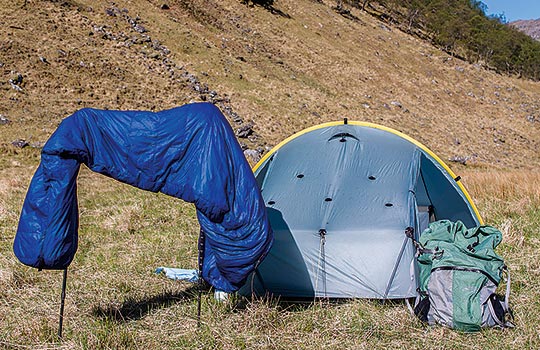1. Consider a silk or synthetic liner to help keep your bag clean and minimise the need for cleaning. Or, if that seems like unnecessary added weight to carry when backpacking, wear clothes inside your sleeping bag.
2. Avoid using compression sacks, particularly with synthetic sleeping bags, which struggle to regain their loft.
3. When not in use, store your sleeping bag somewhere air can flow around it – either loose or loosely stuffed in an oversized storage bag (many are sold with drawstring cotton bags for this purpose).
4. Make sure your sleeping bag is dry before you put it away and store it in a clean, dry, well ventilated place.
5. Air your sleeping bag every so often – even when it’s been in storage not active use. When backpacking, take every opportunity you can to allow it to air, especially if it’s previously got damp.
6. Patch up any small holes that appear in the fabric – this can be done with duct tape as a temporary measure, or a patch can be sewn on. Don’t forget to put seam seal over the stitching.
7. Restore the DWR (durable water repellent) treatment on your bag’s outer fabric every so often – a few cycles in a large tumble dryer on a low heat can make a significant difference.
8. When the DWR needs more comprehensive restoration, consider a spray-on or wash-in treatment such as those from Nikwax and Granger’s.
9. Avoid washing your sleeping bag until it’s really necessary, as both down and synthetic sleeping bags will lose some of their insulating properties when washed. Use a specialist product as normal detergents can shorten the life of down fillings, and either wash by hand or use a washing machine with a large capacity.
10. Even better, consider getting your bag washed by a specialist company such as Mountaineering Designs (01539 536333) or Elite Cleaning Services (01709 833189) (UPDATED: 26/6/14)







